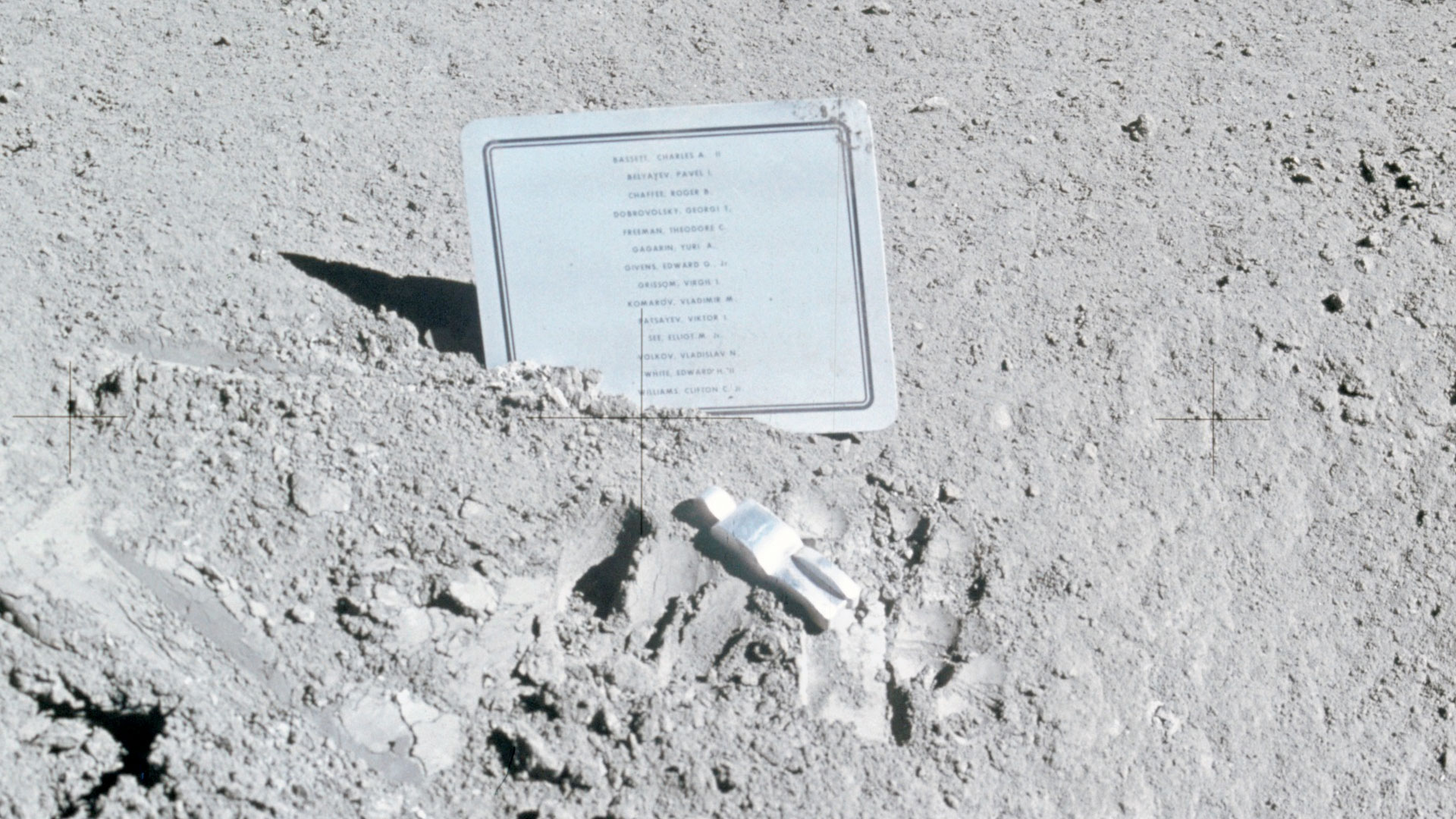A Belgian sculptor credited with the “Fallen Astronaut” figurine left on the surface of the moon in 1971 has now fallen himself.
Artist Paul Van Hoeydonck died on Saturday (May 3) at his home in Wijnegem, Antwerp in Belgium, according to a statement released by his family. He was 99.
“Paul went home peacefully this afternoon,” read the note on his Facebook page.

On Aug. 2, 1971, as NASA’s Apollo 15 astronauts wrapped up their third of three excursions out onto the lunar surface, the mission’s commander David Scott placed a small aluminum figure and its accompanying plaque near where he had parked their lunar rover for the last time. Although Scott did not make mention of it while he was on the moon, he revealed the “Fallen Astronaut” statuette once he and his crewmates, Jim Irwin and Al Worden, were back on Earth.
“We left a small memorial on the moon about 20 feet north of [the lunar rover] in a small, subtle crater,” said Scott. “There’s a simple plaque with 14 names, and those are the names, in alphabetical order, of all of the astronauts and cosmonauts who have died in the pursuit of the exploration of space.”
“Near it is a small figure representing a fallen astronaut,” he added.
Three years earlier, Van Hoeydonck came up with the idea of the mini monument to celebrate “humanity rising into space.” After making adjustments to the sculpture to meet NASA requirements and its purpose being recast as a tribute to the space explorers who made the ultimate sacrifice, Van Hoeydonck met with the Apollo 15 astronauts to hand over his creation a month before their launch.
“I didn’t think it would ever happen. Of course I was interested in all this, but being an artist, who would have thought it possible of having one of my statuettes put on the moon?” said van Hoeydonck in a 2015 interview with the British Interplanetary Society’s Spaceflight magazine.
Complying with NASA’s requirement that the statue not be commercialized, Scott did not disclose the name of the artist. It was not until a replica of the “Fallen Astronaut” was requested and put on display at the Smithsonian’s National Air and Space Museum in Washington, D.C. that Van Hoeydonck’s role in the tribute first became public.
Van Hoeydonck’s plans to sell replicas of his statuette were deferred after Scott and NASA expressed concerns over the exploitation of the memorial. (Van Hoeydonck, in partnership with the Breckner Gallery in Düsseldorf, Germany, recreated the artist’s original 1969 idea for the statue and marketed a limited run of 1,971 signed and numbered pieces in 2019.)
In 2021, Scott rebuked Van Hoeydonck’s involvement, writing in a memorandum that the “Fallen Astronaut” figurine that he left on the moon had been “fabricated by NASA personnel.” He said that the design “was based on standard ‘stick-figures’ that had been universally accepted in the late 1960s as location symbols for bathrooms.”
Scott wrote that before the mission there was “absolutely no contact or knowledge outside these limited NASA personnel regarding this project.”
Whether of not Van Hoeydonck is properly credited with the “Fallen Astronaut” on the moon, his other space sculptures have been exhibited in Milan, Tokyo and at the Guggenheim in New York City. He was also the focus of the 2020 documentary “The Fallen Astronaut,” about “a sculpture that died on its way to the moon.”
Born on Oct. 8, 1925 in Antwerp, Belgium, Van Hoeydonck studied at the Institute of Art History in his home town and at the Institute of Art History and Archaeology in Brussels.
Follow collectSPACE.com on Facebook and on X at @collectSPACE. Copyright 2025 collectSPACE.com. All rights reserved.

